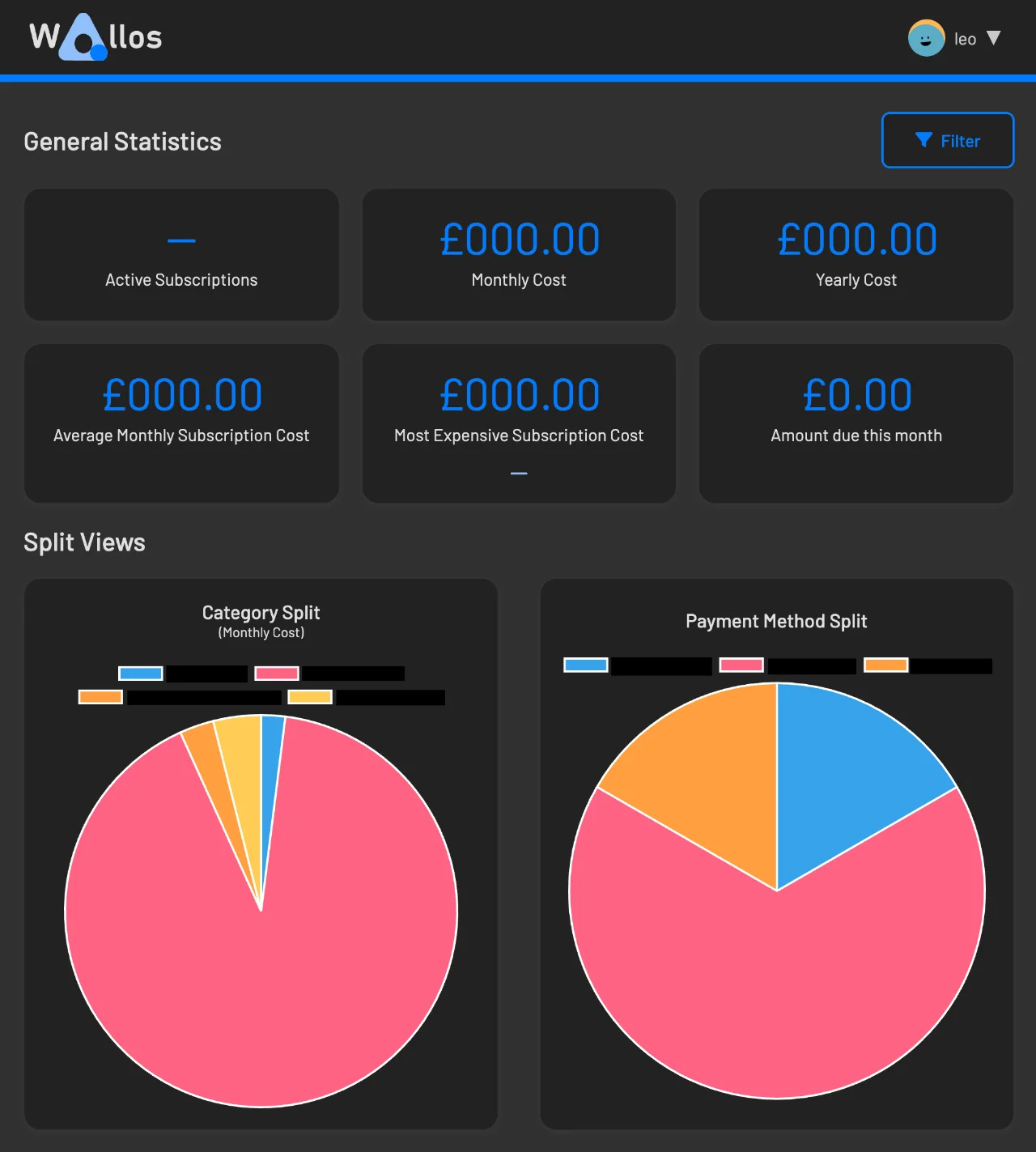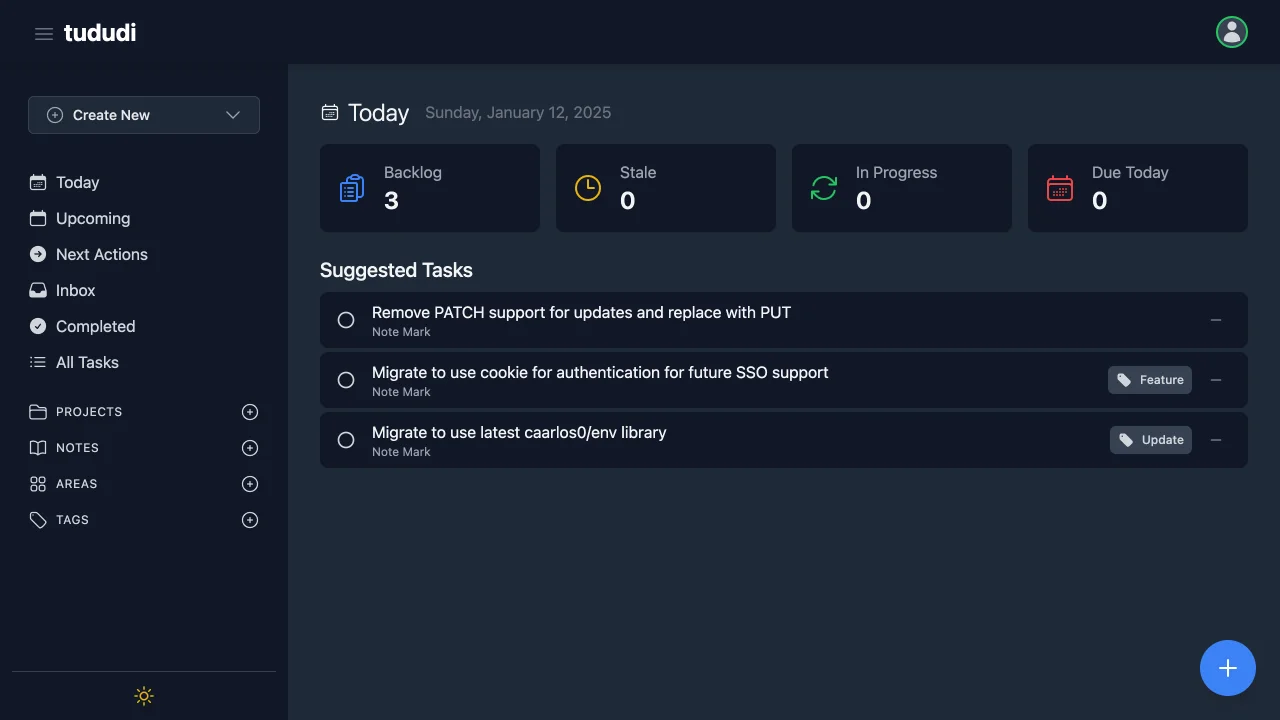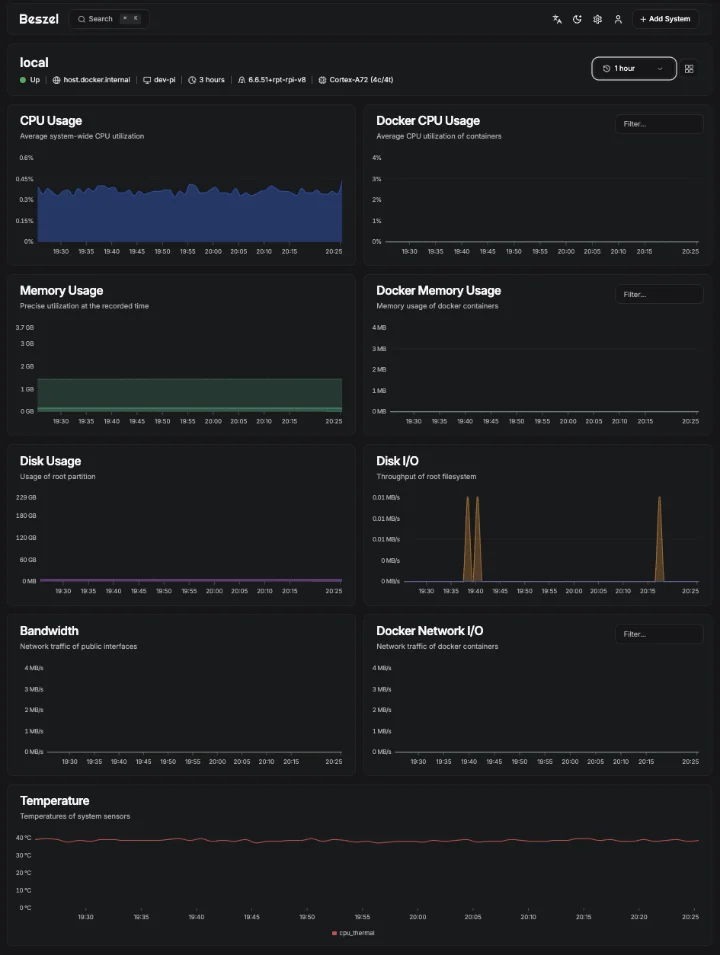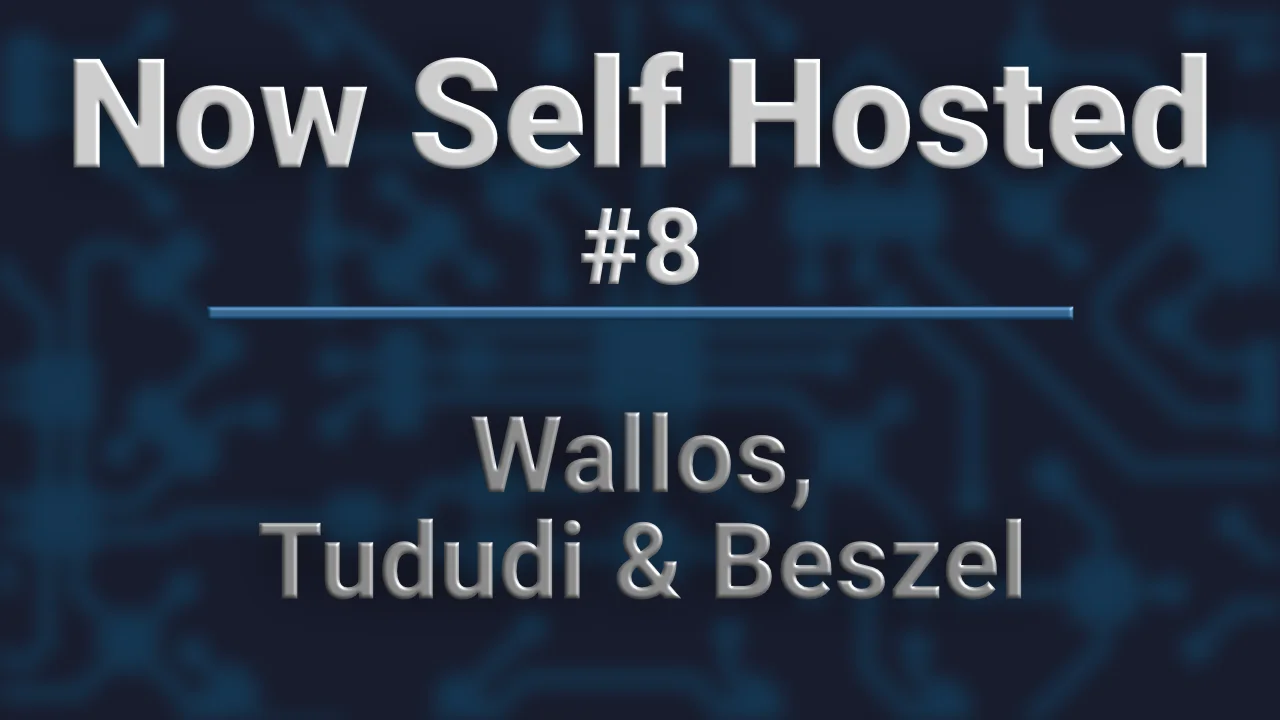Intro
Welcome to the 8th issue of Now Self Hosted, where I take a look at a selection of apps which can be self-hosted. In this issue we will explore: Wallos, tududi and Beszel.
Wallos - V2.42.2
The first app I will be taking a look at in this issue is Wallos. Which is designed to help you track your spending of subscriptions and other expenses charged at regular intervals. This may be particularly useful for today since there are so many services that require a monthly or yearly charge.
Take a look at this fancy statistics page (redacted certain elements for privacy).

I personally find it useful to keep track of my total spending, although I try to keep the amount of subscriptions I have as low as possible.
It was easy to setup via the container image (I used Docker Swarm for deployment). Data is stored in a SQLite file so no external database is needed and can be backed up with ease.
I find the interface clean and easy to navigate with nice padding around different areas of the interface. It offers both light and dark schemes. As well as having a screen with total spending and such, it also features some nice pie charts so you can see easily what category most of your spending is in (to no surprise most of mine is in utilities).
A recent feature that has been added; is a nice calendar view that shows each subscription on the days of every month. It even shows the amount due and total cost in the current month selected.
Before moving on to the next app, I will provide a list of some of the features currently available as of writing.
- Category Management
- Multi-Currency support, including conversion
- Sort options on subscription list
- Multi-User support
- Logos
- Notifications via different methods (email, discord, etc…)
tududi - V0.36
If you have read previous articles you will know that I am looking for a simpler task management app as a alternative to my current one (which is Vikunja). This next app may be the one I have been looking for.
tududi describes itself as:
A Minimalist, Open-Source Task and Project Management Tool

Although currently in a state of early development, it’s features and interface already are already looking great!
Here’s some of the features already implemented:
- Task management
- Different views to find tasks (today, upcoming, completed, etc…)
- Multiple users
- Projects & Areas (group multiple projects)
- Tags
To setup I used Docker Swarm and the pre-made image. It uses an inbuilt SQLite database, so no external database setup was required. Whilst installing was easy, there is a few steps you will have to do once it’s running.
- Inside a shell run
rake console - Create user running
User.create(email: "[YOUR EMAIL]", password: "[YOUR PASSWORD]")
Also when updating you may also have to run the database migrate command, like I had to when migrating from v0.24 to v0.36. Although this is quite simple, you just need to run: rake db:migrate. These steps may change or be removed in later versions, since this project is still in development.
I mentioned earlier that it was still early in development so I would not recommend putting important data into it as an update could reset all data, however definitely check it out and keep an eye out for the stable release as I am sure it will be a great app in the future.
Since it now has a way of grouping your tasks together via it’s “projects” I can now finally use it as a replacement to vikunja.
Thanks Chris Veleris for your work! It is starting to look like a great app.
Beszel - V0.9.0
Now onto Beszel. Which describes itself as:
a lightweight server monitoring platform that includes Docker statistics, historical data, and alert functions

I have been in search of a lightweight monitoring platform that will work centrally that will collect data from all my servers. I discovered Beszel, which happen to be perfect for my needs.
It was easy to setup via the included Docker images, although offers single binaries for both “hub” and “agent” apps. Adding an new agent to the hub program was easy, just go though the add button and give your new agent a name and copy the key into the agent config and start the service.
As for authentication it supports authentication and user management internally, but also allows you to configure OAuth and OIDC. Great for me because I use Authentik for SSO.
As for available features, here’s a few:
- Monitor server stats, docker stats and even GPU
- Allows for alerts to be configured
- Monitors multiple machines
- Has fancy looking graphs, similar to a Grafana dashboard
Readers who may know from previous articles may know that I already use Grafana for different configured dashboards. So you now may be asking why use this instead of Grafana and “Prometheus Node Exporter” or the other alternatives. Well it was I was just looking for something that did not require much setup and would just be plug-and-play.
There must be some downsides. The only one I can see is that all agents have to allow an incoming port for a hub to scrape data. Although it does use a separate ssh server with public key authentication only. Something like Prometheus will also require you to open ports on your servers. So I would not really consider it a downside. I would caution you on always maintaining good security practices.
Thanks For Reading
I hope you enjoyed reading this issue of Now Self Hosted.
Thanks for reading and don’t forget to come back here again for the next issue of Now Self Hosted.
This post was not endorsed or sponsored by any of the mentioned parties. My views are my own.

